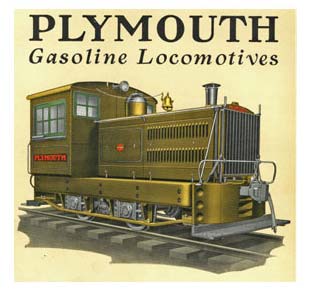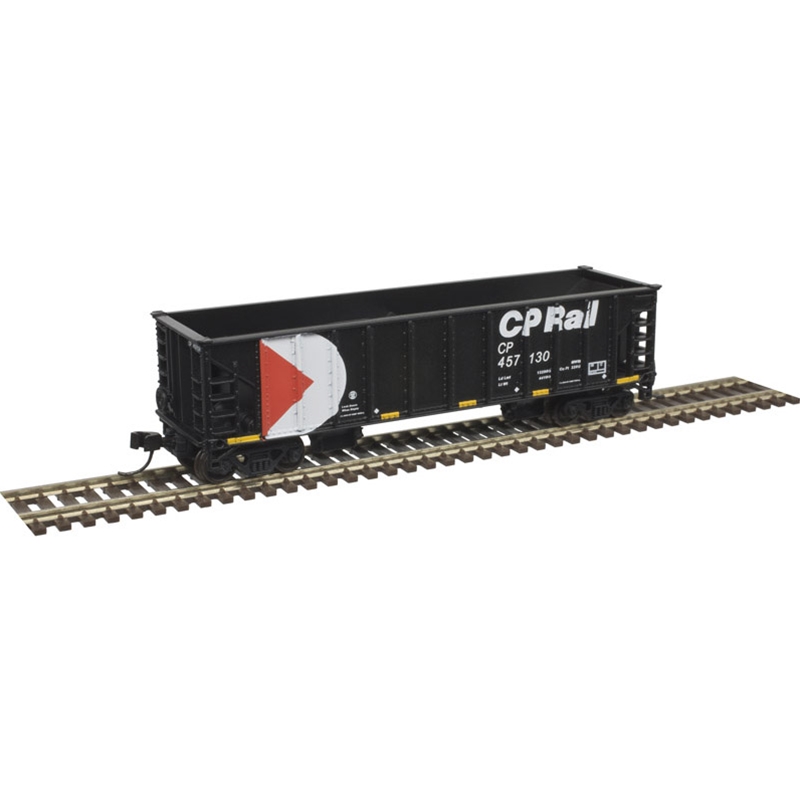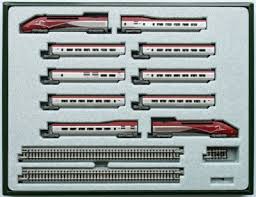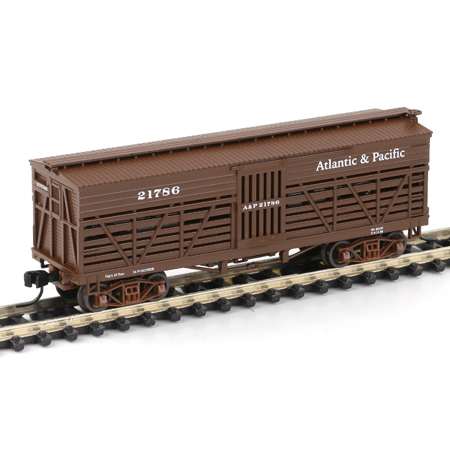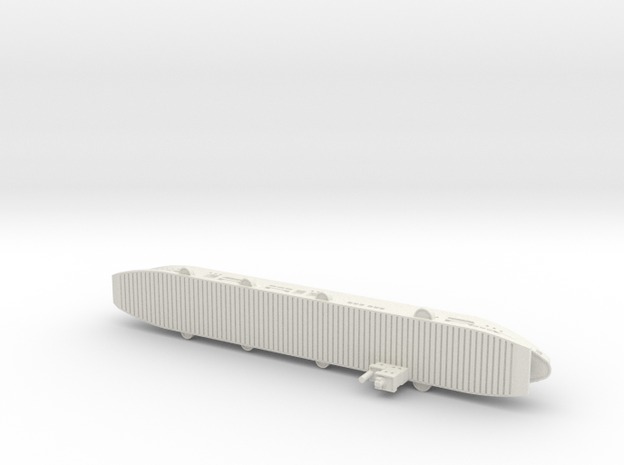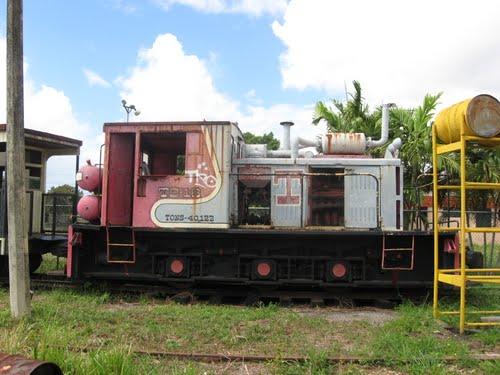Model Information: This is a battery operated Chinese made locomotive produced for Aurora in 1975.
DCC Information: Forget about DCC with these.
Prototype History: The Plymouth Locomotive Works was founded in 1910. They specialized in small switcher locomotives for industrial use. The WDT was the 6-wheel model of their diesel switcher.
With 6-wheels, the WDT could handle a fairly heavy powerplant capable of moving small numbers of very heavy freight cars. When a railroad moves a freight car, the owner of the freight car is charged every time the car is moved. The typical floor price for such a move is $200. For an industrial complex that has to shunt 100's of cars daily, it quickly becomes economical to own your own switchers rather than contract with a railroad. Plymouth locomotive works specialized in providing purpose built engines for exactly this purpose: providing a low-cost alternative to using a railroad to move cars around your yard. Own your own low-maintenance, high-power industrial yard switcher.
With 6-wheels, the WDT could handle a fairly heavy powerplant capable of moving small numbers of very heavy freight cars. When a railroad moves a freight car, the owner of the freight car is charged every time the car is moved. The typical floor price for such a move is $200. For an industrial complex that has to shunt 100's of cars daily, it quickly becomes economical to own your own switchers rather than contract with a railroad. Plymouth locomotive works specialized in providing purpose built engines for exactly this purpose: providing a low-cost alternative to using a railroad to move cars around your yard. Own your own low-maintenance, high-power industrial yard switcher.
Road Name History: Chessie System, Inc. was a holding company that owned the Chesapeake & Ohio Railway (C&O), the Baltimore & Ohio Railroad (B&O), the Western Maryland Railway (WM), and several smaller carriers. It was incorporated in Virginia on February 26, 1973, and it acquired the C&O (which controlled the other companies) on June 15. C&O had been popularly known as "Chessie System" since the 1930s.
The three railroads had been closely related since the 1960s. C&O had acquired controlling interest in B&O in 1962, and the two had jointly controlled WM since 1967.
On November 1, 1980, Chessie System merged with Seaboard Coast Line Industries to form CSX Corporation. However, the Chessie image continued to be applied to new and re-painted equipment until mid-1986, when CSX introduced its own paint scheme. The B&O and C&O were not legally merged out of existence until 1987, when the company's official successor, CSX Transportation was founded.
Headquartered in Cleveland, Ohio, the Chessie System was the creation of Cyrus S. Eaton and his prot?g? Hays T. Watkins, Jr., then president and chief executive officer of C&O. A chief source of revenue for the Chessie System was coal mined in West Virginia. Another was the transport of auto parts and finished motor vehicles.
The signature symbol of the Chessie System was its "Ches-C", a large emblem incorporating the outline of the C&O's famous "Chessie" the kitten logo. The Ches-C was emblazoned on the front of all Chessie System locomotives, and also served as the "C" in "Chessie System" on the locomotive's flanks, and on other rolling stock. The Chessie System itself did not own any locomotives or other rolling stock; rather, equipment would be placed on the roster of one of the three component railroads. While all three companies shared a common paint scheme of yellow, vermillion, and blue, actual ownership of the equipment was denoted by the reporting marks C&O, B&O, or WM.
From Wikipedia
The three railroads had been closely related since the 1960s. C&O had acquired controlling interest in B&O in 1962, and the two had jointly controlled WM since 1967.
On November 1, 1980, Chessie System merged with Seaboard Coast Line Industries to form CSX Corporation. However, the Chessie image continued to be applied to new and re-painted equipment until mid-1986, when CSX introduced its own paint scheme. The B&O and C&O were not legally merged out of existence until 1987, when the company's official successor, CSX Transportation was founded.
Headquartered in Cleveland, Ohio, the Chessie System was the creation of Cyrus S. Eaton and his prot?g? Hays T. Watkins, Jr., then president and chief executive officer of C&O. A chief source of revenue for the Chessie System was coal mined in West Virginia. Another was the transport of auto parts and finished motor vehicles.
The signature symbol of the Chessie System was its "Ches-C", a large emblem incorporating the outline of the C&O's famous "Chessie" the kitten logo. The Ches-C was emblazoned on the front of all Chessie System locomotives, and also served as the "C" in "Chessie System" on the locomotive's flanks, and on other rolling stock. The Chessie System itself did not own any locomotives or other rolling stock; rather, equipment would be placed on the roster of one of the three component railroads. While all three companies shared a common paint scheme of yellow, vermillion, and blue, actual ownership of the equipment was denoted by the reporting marks C&O, B&O, or WM.
From Wikipedia
Brand/Importer Information:  In 1975 Aurora was on its third owner and about to give up the ghost. They had terminated the Postage Stamp Trains line five years earlier, but the owners evidently made a last-ditch attempt to re-enter the N Scale model railroading market with Rail Masters. This was a very small, oddball product line consisting of battery-operated locomotives and Mexican-made rolling stock using a new coupler type that was completely incompatible with every other coupler on the market.
In 1975 Aurora was on its third owner and about to give up the ghost. They had terminated the Postage Stamp Trains line five years earlier, but the owners evidently made a last-ditch attempt to re-enter the N Scale model railroading market with Rail Masters. This was a very small, oddball product line consisting of battery-operated locomotives and Mexican-made rolling stock using a new coupler type that was completely incompatible with every other coupler on the market.

Item created by: CNW400 on 2019-03-01 09:10:48. Last edited by CNW400 on 2020-05-17 15:40:14
If you see errors or missing data in this entry, please feel free to log in and edit it. Anyone with a Gmail account can log in instantly.
If you see errors or missing data in this entry, please feel free to log in and edit it. Anyone with a Gmail account can log in instantly.




